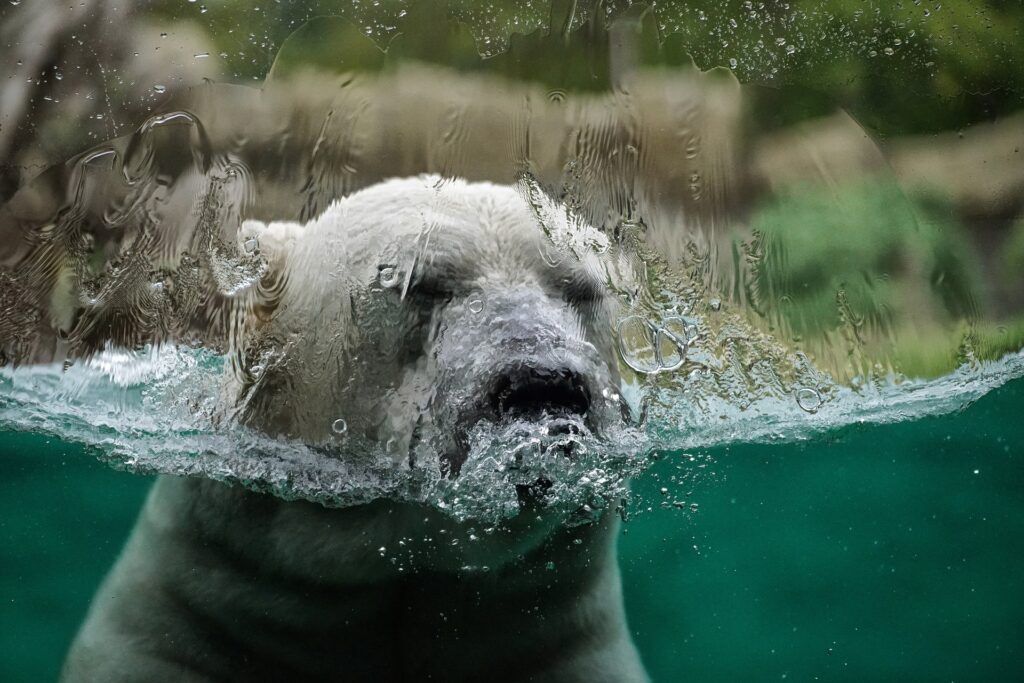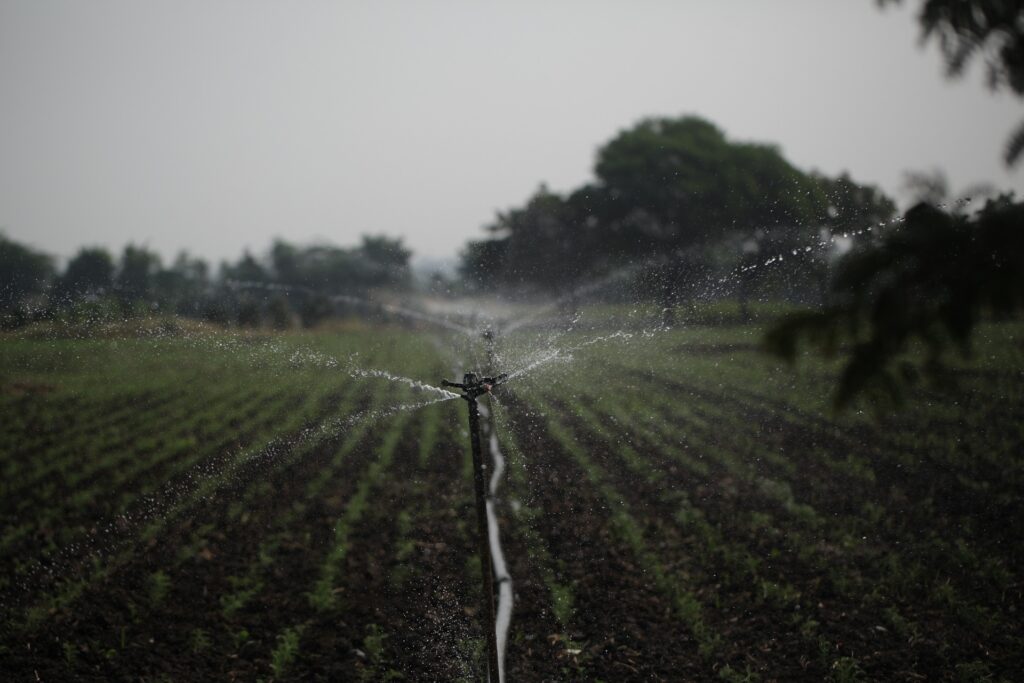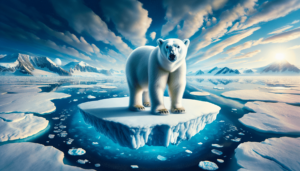Climate Change: Introduction
The year is 2023, and our old pal Earth is throwing more curveballs at us than an enthusiastic rookie pitcher in the World Series. We’re talking unpredictable weather, melting ice caps, and species playing a not-so-fun game of hide-and-seek. You’ve guessed it, We’re addressing climate change, the facts of which have become the new ‘elephant in the room’ that’s the size of an iceberg… well, a melting iceberg. But don’t lose heart just yet!
“Climate change” – the facts have been ricocheting around our skulls for years now, creating an incessant buzz, much like that one mosquito on a hot, sweaty summer night. But do we actually comprehend the severity and the reality behind those words? Or are they simply scare tactics meant to spook us out of our wasteful habits? Strap in as we dive deep into the nitty-gritty of climate change – the facts, the impacts, and most importantly, how you, yes you, can make a difference.
Understanding Climate Change
What is Climate Change?
Climate change isn’t some far-fetched sci-fi concept; it’s a stark reality, and we’re the architects of this planetary shift. Imagine Earth tampering with its thermostat, cranking up the heat to an uncomfortable degree, and you’ve got climate change in a nutshell. But here’s the twist: Earth isn’t the antagonist; we are.
Climate change, fundamentally, refers to long-term alterations in Earth’s average weather patterns, encompassing shifts in temperature, precipitation, and other climatic elements. While natural processes contribute to climate variability, human activities have significantly accelerated the pace of change.
Causes of Climate Change
So, how did we end up in this mess? It’s a tale of our own making. Every time we burn fossil fuels like coal, oil, or gas to meet our energy needs, we’re releasing copious amounts of greenhouse gases into the atmosphere. Combine this with rampant deforestation, industrial processes, and agriculture’s carbon footprint, and you’ve got a recipe for a planet on the boil.
Greenhouse gases, including carbon dioxide (CO2), methane (CH4), and nitrous oxide (N2O), trap heat from the sun in the Earth’s atmosphere, creating a natural greenhouse effect that maintains a habitable temperature. However, our relentless emissions have amplified this effect, akin to piling extra blankets on a bed, causing the planet to overheat.
Impact of Climate Change on the Planet
As the Earth’s temperature rises due to climate change, the consequences are profound and far-reaching, extending well beyond a simple shift in weather patterns. Climate change is a shape-shifter, morphing everything from sea levels to weather events.
Changing Weather Patterns: Climate change disrupts familiar weather patterns, leading to more frequent and severe extreme weather events. This includes intense heatwaves, torrential rainfall, prolonged droughts, and erratic storm behavior. These changes can disrupt ecosystems, damage infrastructure, and threaten human lives.
Sea Level Rise: One of the most visible impacts of climate change is the rise in sea levels, driven primarily by the thermal expansion of seawater and the melting of polar ice caps and glaciers. Coastal areas are increasingly susceptible to flooding and erosion, displacing populations and causing economic losses.
Extreme Weather Events: Climate change amplifies the intensity and frequency of extreme weather events. Hurricanes, typhoons, cyclones, and wildfires are becoming more destructive, causing widespread devastation and straining emergency response resources.
Ecosystem Disruption: Shifts in temperature and precipitation patterns can disrupt ecosystems, alter the distribution of plant and animal species, and trigger biodiversity loss. This, in turn, affects food chains, ecosystem services, and the availability of natural resources.
In essence, climate change is not just about a warmer planet; it’s about a planet undergoing rapid transformation, impacting virtually every facet of life on Earth. Acknowledging the reality of climate change is the first step toward confronting its challenges and working toward sustainable solutions.
Climate Change & Biodiversity
How Climate Change Affects Biodiversity
The story of biodiversity in a world grappling with escalating climate change is one of adaptation, migration, and sometimes, silence. Climate change, driven by human activities, is significantly altering the living conditions of Earth’s diverse flora and fauna. These changes are akin to a stern, unrelenting school principal, compelling some species to modify their behavior, relocate to new habitats, or, regrettably, face the harsh consequences of an unyielding reality.
Polar Bears: Ice, No More Nice
The iconic polar bears, once the poster children for the Arctic wilderness, are now emblematic of the profound impacts of climate change. Rising global temperatures are causing the rapid melting of Arctic sea ice, the primary hunting grounds for these majestic creatures. As the ice diminishes, polar bears struggle to find food and reproduce successfully, resulting in a decline in their population. The future for polar bears is increasingly uncertain, with the loss of their icy habitat painting a grim picture for this species.
Coral Reefs: Losing Their Cool and Color
Coral reefs, often referred to as the rainforests of the ocean, are vibrant ecosystems teeming with diverse marine life. However, warming ocean waters due to climate change are pushing these delicate organisms to their limits. Elevated sea temperatures trigger coral bleaching, a process where corals expel their symbiotic algae, leading to their stark whiteness and vulnerability. Coral bleaching events have become more frequent and severe, resulting in the decline of these vital marine ecosystems. Without immediate action to mitigate climate change, the vibrant colors and biodiversity of coral reefs may fade into oblivion.
Koalas: A Eucalyptus-less Existence
Koalas and eucalyptus trees share a unique relationship in Australia’s ecosystems. Yet, rising temperatures, shifting rainfall patterns, and the increased occurrence of wildfires are threatening the eucalyptus forests that these iconic marsupials call home. The resultant scarcity of eucalyptus leaves, their primary food source, has led to malnutrition and habitat loss for koalas. Climate-induced pressures on eucalyptus trees not only endanger the koala population but also disrupt the ecological balance of these forests.
Penguins: On Thin Ice
Emperor penguins, the largest and heaviest of all penguin species, rely on the Antarctic ice to breed and raise their young. However, climate change is altering their icy breeding grounds. Warming temperatures are causing the Antarctic ice to thin and shrink, disrupting the penguins’ breeding cycles and challenging their survival. The delicate balance of this species, with their unique reproductive strategy, is threatened as the ice continues to dwindle, impacting their population.
Butterflies: Fluttering in the Wrong Direction
Even the smallest creatures are not immune to the impacts of climate change. Butterflies, known for their delicate beauty, are facing challenges due to shifting temperatures. Warmer conditions are causing some butterfly species to migrate northward in search of cooler habitats. However, their host plants, crucial for their life cycles, are not shifting at the same pace. This disconnect disrupts the intricate balance of the food chain and poses a threat to these fragile insects.
Understanding these changes and their far-reaching consequences is essential for grasping the magnitude of how climate change is reshaping biodiversity on Earth. However, while the challenges are daunting, there is a call to action embedded in each of these stories. The time to act is now, as we hold the power to mitigate climate change and protect the incredible diversity of life that shares our planet.

Adapting to a Changing Climate: Navigating the Roller Coaster
Climate change has thrust us onto a one-way roller coaster ride we didn’t ask for, and adaptation is our means of bracing for the unexpected twists and turns this journey presents. It’s about preparing ourselves, our communities, and our world to cope with the realities of a changing climate. Here’s a closer look at some of the adaptation strategies that are helping us navigate this ride.
Human Adaptation Strategies: Building Resilient Communities
Building resilient communities is like crafting a safety net for ourselves in the face of climate-induced challenges. This involves designing infrastructure capable of withstanding the brute force of hurricanes, the scorching heat of heatwaves, and the relentless power of floods. It means constructing buildings and roads that can endure extreme weather events and implementing early warning systems to alert communities in the path of oncoming disasters. Resilience also encompasses strengthening health care systems to address the health risks posed by changing climate patterns.
Farming Adaptation: Farmers as Frontline Warriors
Farmers have emerged as frontline warriors in the battle against climate change. The facts are undeniable; the agricultural sector faces immense pressure to adapt to changing conditions. Farmers are adjusting their practices by embracing drought-resistant crop varieties, modifying planting schedules to align with shifting seasons, and employing precision farming technologies. They are akin to innovative chefs, adjusting their recipes according to the ingredients provided by a changing climate. Additionally, sustainable agriculture practices are gaining traction, emphasizing soil conservation, reduced chemical usage, and water-efficient irrigation techniques.
Water Management Adaptation: Balancing Too Much or Too Little
Climate change is playing a capricious game of “Too Much or Too Little” with our water resources. Some regions grapple with severe droughts, while others are inundated with frequent floods. To strike a balance, better water management strategies are being implemented. These include rainwater harvesting to capture and store precious rainwater, efficient irrigation systems that maximize water use, and sustainable water usage practices that prioritize conservation. The goal is to ensure a steady and equitable distribution of water resources while minimizing waste.
Climate-Resilient Urban Planning: Greening Our Concrete Jungles
Our urban landscapes, characterized by sprawling skyscrapers and concrete jungles, are undergoing a green makeover. Climate-resilient urban planning is taking root, with an emphasis on incorporating more green spaces to cool down cities. This entails designing buildings that can withstand extreme weather events, investing in sustainable transport options like electric buses and bike lanes, and implementing zoning regulations that consider climate vulnerabilities. The aim is to create cities that are both livable and resilient, capable of weathering the storms – both literal and metaphorical – of climate change.
Nature’s Adaptation & Resilience: A Global “Survivor” Scenario
As we gear up for adaptation, nature too is stepping up its game. We witness species adapting in real-time. Plants are flowering earlier, birds are altering their migration patterns, and marine species are shifting to cooler waters. It’s like observing a global, inter-species version of “Survivor,” where organisms are racing to adjust to changing conditions. This underscores the remarkable resilience of the natural world and highlights the importance of preserving diverse ecosystems to enable these adaptive responses.
In the face of climate change, adaptation strategies are our tools for resilience and survival. While the roller coaster ride continues, these strategies help us prepare for the unexpected, nurture our communities, and safeguard our environment.
Mitigating Climate Change
Reducing Greenhouse Gas Emissions
We’ve been throwing a greenhouse gas party for a while now, and it’s time to clean up the mess. Cutting down on our carbon footprint involves everything from greening our industries to changing our consumption patterns. We need to think of energy efficiency as our new best friend, always by our side, reminding us to turn off the lights or choose public transport.
Planting Trees: Nature’s Own Carbon Capture
Nature has had its own carbon capture technology for millions of years: trees. Through photosynthesis, trees absorb CO2 and breathe out oxygen, thus reducing the greenhouse gases in the atmosphere. So, by planting more trees and curbing deforestation, we can amplify this natural carbon capture process.
Investing in Renewable Energy
The sun, wind, and water – they’re not just names we learned in our primary science textbooks. These elements hold the key to our energy needs. By harnessing the power of these renewable resources, we can keep our lights on and our machines running without further heating the planet.
Sustainable Agriculture
We can’t stop eating, but we can make our food system more sustainable. This involves supporting organic farming practices, reducing food waste, and opting for locally sourced, seasonal produce. It’s time to show some love to our local farmers’ markets.
Green Building Practices
Our homes and offices, where we spend a significant chunk of our lives, can become a part of the solution. Green building practices involve designing structures that are energy-efficient, use sustainable materials, and have a minimal environmental impact. Think of it as giving our buildings a ‘green certification’ and making a very definite step toward the effects of climate change.
With these adaptations and mitigation strategies, we can face the climate crisis head-on, transforming our challenges into opportunities for a greener, healthier world.
How You Can Make a Difference
Small Changes, Big Impact
You’re probably thinking, “What can I, a single person, do to help?” The answer is – a lot. Remember, every big wave starts with a small ripple. Altering our consumption patterns, reducing waste, and shifting to a plant-based diet, all contribute to climate change; the facts don’t lie, we can all add our own little ripples in the fight against climate change.
Engage in Climate Advocacy
Being a hero doesn’t always mean wearing a cape; sometimes, it’s about raising your voice for what’s right. Engage in climate advocacy, participate in climate strikes, volunteer for environmental causes, and let’s show the world that we care for our planet.
Light Up with LEDs
Think of LED lights as the chameleons of the electrical world. They’re energy-efficient, long-lasting, and kind to your wallet in the long run. Switching to LED lights is like assigning a personal trainer to your electricity bill, slimming it down one kilowatt-hour at a time.
Less is More: The Minimalism Mantra
The mantra of ‘less is more’ isn’t just a hip lifestyle trend. It’s a strategy to combat climate change. Cutting down on your consumption – be it fashion, gadgets, or food – is a step towards reducing your carbon footprint. It’s as effective as putting your greenhouse gas emissions on a diet.
Revisit Recycling
Recycling is not just for school projects. By recycling and composting, you can divert about 30% of your waste from landfills. It’s like giving your trash a second shot at life, and in the process, reducing the energy and resources needed to produce new items.
Green Your Commute
It’s time to put on your creative hat and rethink your commute. Can you bike or walk to your destination? If not, how about carpooling or using public transit? Greening your commute is like switching your transport mode from a gas-guzzling monster truck to a feather-light bicycle.
Support Renewable Energy
If your pocket allows, consider switching to renewable energy sources like solar or wind for your home. It’s like tapping into the boundless energy bank of nature, without the guilt of greenhouse gas overdrafts.
Your Money, Your Voice
Remember, every dollar you spend is a vote for the kind of world you want to live in. Support businesses that prioritize sustainability and fair trade practices. It’s like backing the ‘green team’ in the world’s most important match.
Conclusion: Turning Tides Together
That’s it, folks! Climate change the facts are quite comparable to a roller coaster ride through the highs and lows of climate change – the facts, the impacts, and the ways we can all help mitigate it. The journey is not going to be an easy one, but hey, the best roller coasters never are, right? Remember, we’re all in this together, just like a giant, global band, each playing our part in the symphony of change. And trust me, the earth has never needed its conductors more. So, let’s pick up our batons, and here’s to creating harmony in the face of climate change!
Remember, in the end, it’s not about the world we’re leaving for our children, but the children we’re leaving for our world. Every small action matters. So, are you ready to roll up your sleeves and join the green revolution? Let’s do this, folks, because there’s no Planet B!
Frequently Asked Questions
- What are the main causes of climate change? Picture us throwing a massive, never-ending bonfire party where the main fuel is fossil fuels. That’s essentially what’s causing climate change.
- What are the impacts of climate change on biodiversity? Think of it as a really bad game of musical chairs. As the climate changes, habitats do too, and the species that can’t keep up face the risk of extinction.
- How can we adapt to climate change? By building resilient communities, switching to green technologies, and always staying one step ahead with early warning systems.
- What are some ways to mitigate climate change? Think green. Green energy, green buildings, green lifestyle. Oh, and a techy vacuum cleaner to suck in all the excess CO2.
- How can I make a difference in the fight against climate change? Every drop counts. Reduce, reuse, recycle, switch to a plant-based diet, and become the voice of change.




